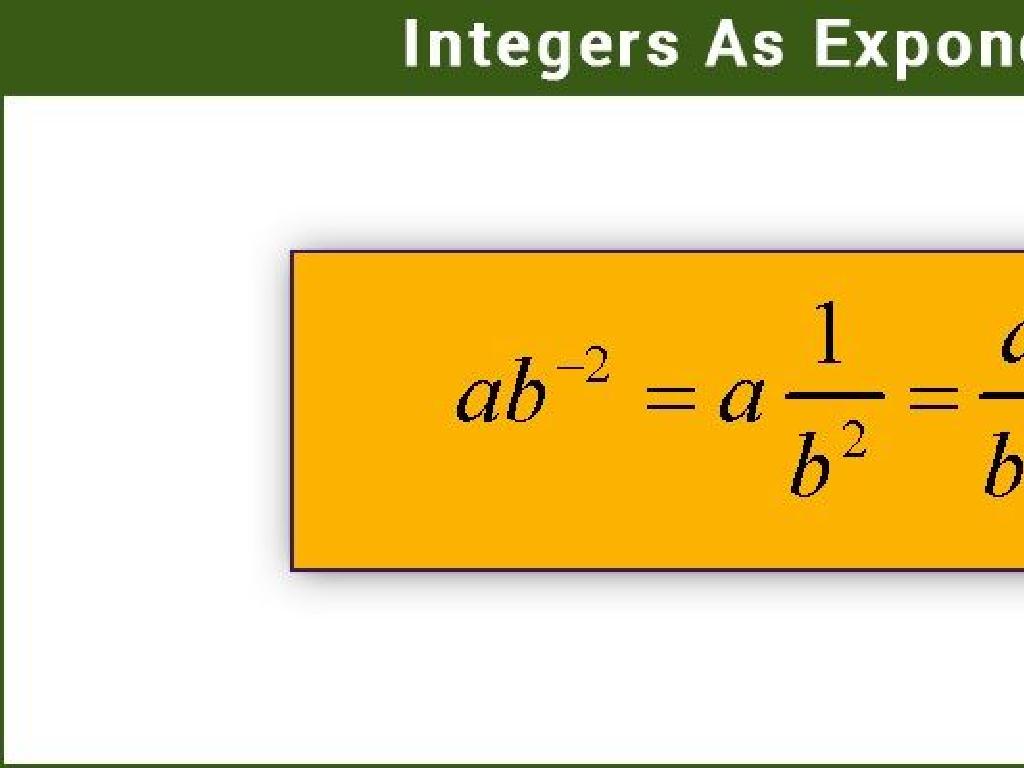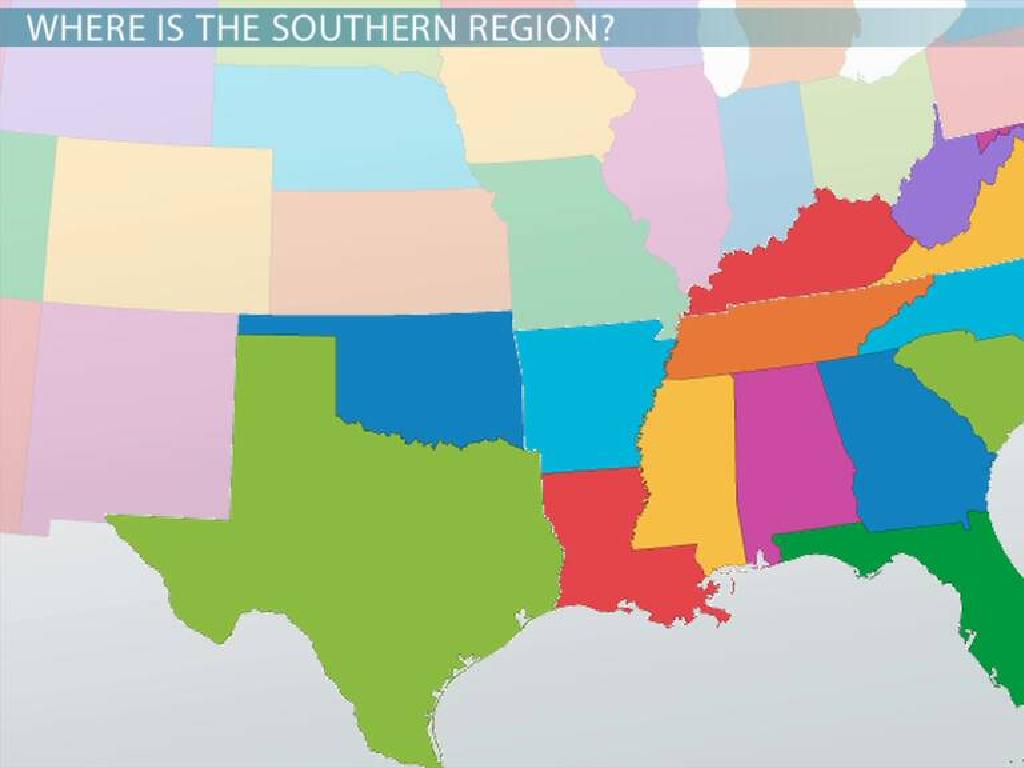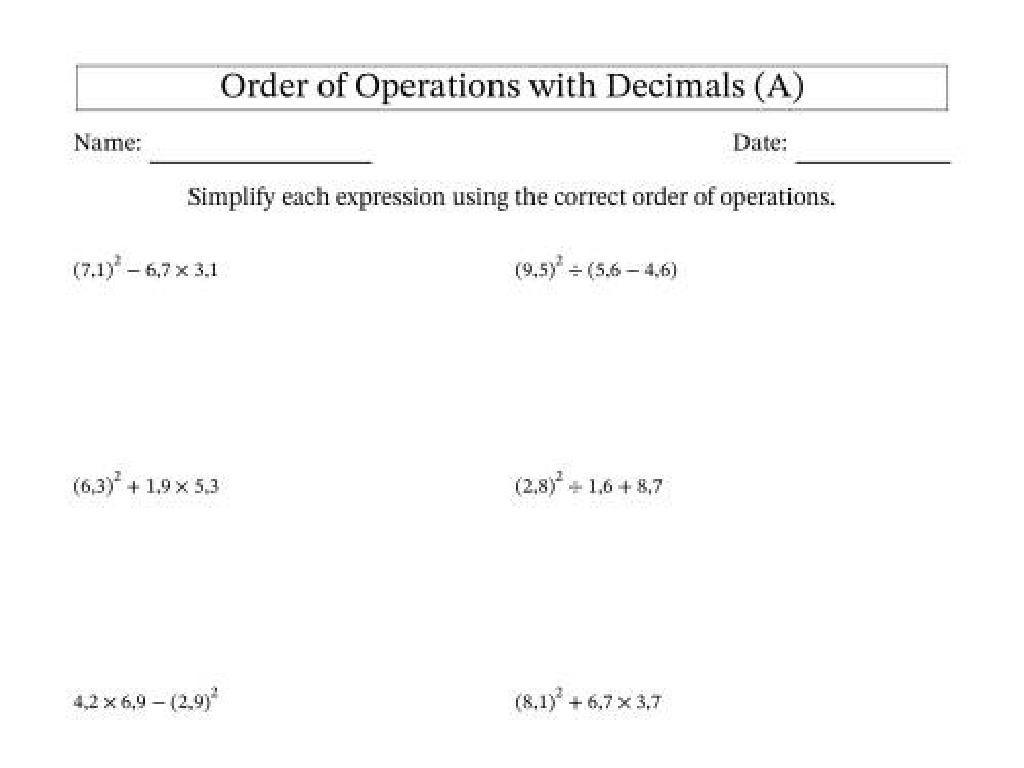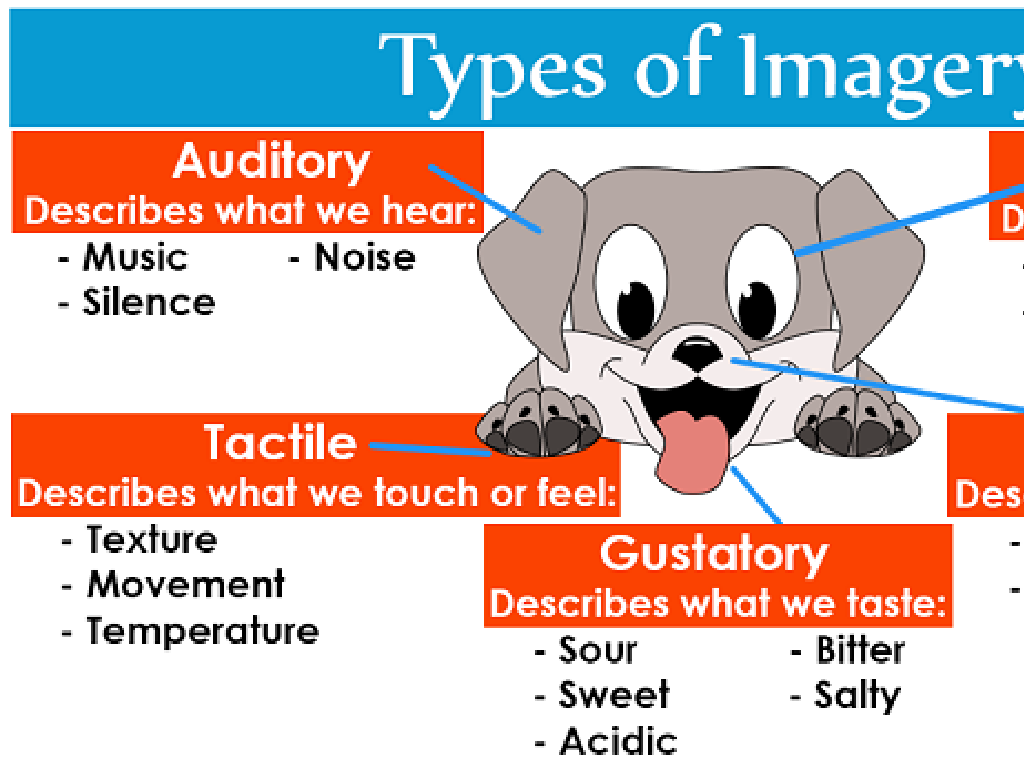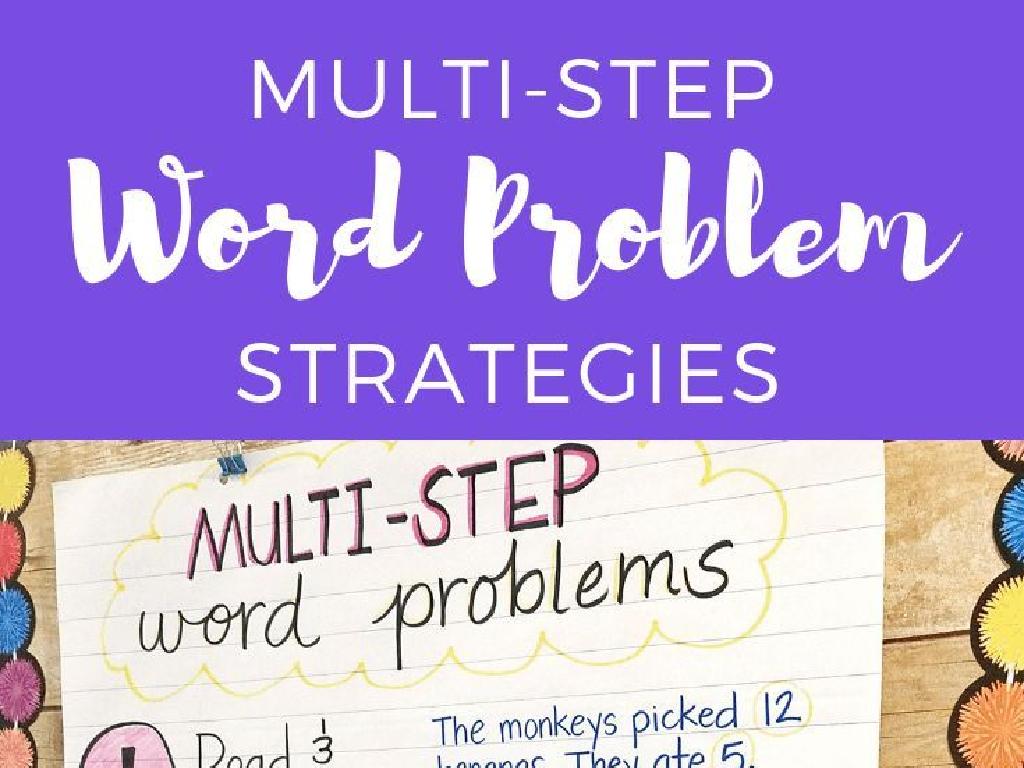Find Missing Angles In Triangles Using Ratios
Subject: Math
Grade: Seventh grade
Topic: Two-Dimensional Figures
Please LOG IN to download the presentation. Access is available to registered users only.
View More Content
Angles in Triangles: A Geometric Adventure
– Explore two-dimensional figures
– Triangles and their angles
– A triangle has 3 angles, adding up to 180°
– Using ratios to find missing angles
– If two angles are known, calculate the third using ratios
– The sum of angles in a triangle
– Remember: angle sum property states that angles add up to 180°
|
This slide introduces students to the concept of angles within triangles, a fundamental aspect of two-dimensional geometry. Begin by discussing various two-dimensional figures to ensure students are comfortable with the basics. Focus on triangles, explaining that they have three angles with a total sum of 180 degrees. Teach students how to use ratios to find a missing angle when the other two angles are known. Emphasize the angle sum property of triangles, which is crucial for solving problems involving missing angles. Provide examples and encourage students to solve for missing angles using the information given. This will prepare them for more complex geometric problems and enhance their understanding of two-dimensional figures.
Recap: Types of Triangles
– Review triangle classifications
– Based on sides and angles, triangles are categorized as equilateral, isosceles, or scalene.
– Identify classroom triangles
– Look around or use pictures to find real-life examples of different types of triangles.
– Properties of common triangles
– Equilateral: all sides/angles equal. Isosceles: two sides/angles equal. Scalene: all sides/angles different.
– Using properties to find angles
– Understand how the properties of each triangle type can help us calculate missing angles.
|
Begin with a quick review of the different types of triangles, focusing on the characteristics that define equilateral, isosceles, and scalene triangles. Encourage students to identify examples of these triangles in the classroom or from images to help them visualize the concepts. Discuss the properties of each type, such as equal sides and angles in an equilateral triangle, and how these properties can be used to determine missing angles, especially when combined with the knowledge that the sum of angles in a triangle is always 180 degrees. This understanding is crucial for solving problems involving finding missing angles using ratios.
Triangle Angle Sum Theorem
– Sum of triangle angles is 180°
– Example: Finding the third angle
– If two angles are 50° and 60°, the third is 180° – (50°+60°) = 70°
– Class Practice: Missing angles
– Work on triangles with different known angles
|
This slide introduces the Triangle Angle Sum Theorem, which is a fundamental concept in understanding two-dimensional figures. Begin by explaining that the sum of the interior angles in any triangle will always equal 180 degrees. Provide an example where two angles are known, and students must find the third angle by subtracting the sum of the known angles from 180 degrees. For class practice, present several triangles with different combinations of known angles and have students calculate the missing angles. This exercise will reinforce their understanding of the theorem and improve their problem-solving skills. Make sure to walk around the classroom to assist students who may need help and to check for understanding.
Introduction to Ratios in Triangles
– Define a ratio
– A ratio shows the relative sizes of two or more values.
– Ratios in daily life
– Examples: recipes in cooking, or speed of a car.
– Ratios for comparing quantities
– How many times one number contains another.
– Ratios in triangle angles
– Find missing angles by comparing known angles.
|
This slide introduces the concept of ratios, which is fundamental in understanding how to find missing angles in triangles. A ratio is a way to compare two quantities, showing how many times one value contains another. In everyday life, ratios are everywhere, from mixing ingredients in a recipe to determining the speed of a car. When it comes to triangles, ratios allow us to compare the known angles to find the unknown ones. For example, if two angles in a triangle are known, the third can be found since the sum of angles in a triangle is always 180 degrees. Encourage students to think of ratios as a tool for comparison and to practice finding missing angles using this method.
Ratios in Triangles: Finding Missing Angles
– Ratios help solve for angles
– Angle ratios in similar triangles
– If two triangles are similar, their corresponding angles are equal and sides are proportional.
– Map reading uses triangle ratios
– Triangles on maps help with navigation; the angles can determine direction.
– Practice with real-life scenarios
|
This slide introduces the concept of using ratios to find missing angles in triangles, a key skill in geometry. Students will learn that by understanding the properties of similar triangles, they can set up proportions to solve for unknown angles. Real-life applications, such as map reading, where triangle ratios are used to navigate directions, will help students see the practical use of this skill. Encourage students to think of other examples where knowing the angles in triangles might be useful in real life. Provide practice problems where students can apply angle ratios to find missing angles in various triangles.
Finding Missing Angles in Triangles
– Steps to calculate missing angles
– Sum of angles in a triangle is 180°. Use this to find missing angles.
– Example: Find the third angle
– If two angles are known, e.g., 50° and 60°, subtract their sum from 180° to find the third.
– Group Activity: Collaborative solving
– Work in groups to solve angle problems, share different methods.
– Utilize ratios for precision
|
This slide introduces the concept of finding missing angles in triangles using the knowledge that the sum of angles in a triangle is always 180 degrees. Start with a step-by-step guide on how to approach these problems. Provide an example where two angles are given, and students must find the third. For the group activity, encourage students to collaborate and discuss different strategies to solve for missing angles. This will help them understand the concept of ratios and how they apply to real-world problems. Prepare 4-5 different triangle problems for the activity, ensuring a variety of angle combinations to challenge all students.
Let’s Practice Together: Triangles and Ratios
– Interactive problem-solving
– Guided practice session
– Work through problems as a class with step-by-step guidance
– Immediate feedback on answers
– Students will correct mistakes in real-time, enhancing understanding
– Tips for quick calculations
– Learn shortcuts for finding missing angles efficiently
|
This slide is designed for an interactive class activity focused on finding missing angles in triangles using ratios. Start with a brief recap of the relevant concepts, then move into an interactive problem-solving session where students attempt to solve problems on their own before reviewing the solutions as a class. Provide immediate feedback to students as they work through the problems to reinforce learning. Share tips and tricks that can help students perform these calculations more quickly, such as recognizing patterns in angle ratios. Prepare several example problems of varying difficulty and ensure to engage with all students, catering to different learning paces. The goal is to build confidence and proficiency in applying the concept of ratios to find missing angles in triangles.
Class Activity: Angle Scavenger Hunt
– Find classroom triangle shapes
– Measure angles of triangles
– Use ratios for missing angles
– If one angle is missing, use the fact that the sum of angles in a triangle is 180°.
– Present findings to class
|
This interactive class activity is designed to help students apply their knowledge of finding missing angles in triangles using ratios. Students will search for objects in the classroom that have triangular shapes, such as rulers, book covers, or desk arrangements. They will then measure the angles they can and apply the concept that the sum of angles in a triangle is always 180 degrees to find any missing angles. Encourage students to work in pairs or small groups to foster collaboration. After the activity, each group will present their findings to the class, explaining how they used angle ratios to determine the missing angles. Possible variations of the activity could include using different shaped triangles, such as right, acute, or obtuse, and incorporating the use of protractors for angle measurements.
Conclusion & Homework: Triangle Angles
– Recap: Finding angles with ratios
– Why it’s key in geometry
– Understanding angles helps solve complex geometric problems
– Real-life applications
– Used in construction, art, navigation
– Homework: Practice worksheet
– Worksheet to solve problems on triangle angles using ratios
|
As we conclude, remember that the ability to find missing angles in triangles using ratios is a fundamental skill in geometry. It’s essential for solving various geometric problems and has practical applications in numerous fields such as construction, where accurate measurements are crucial, or in art and design, where understanding angles can help in creating visually appealing works. For homework, students will complete a worksheet that provides additional practice on this topic, reinforcing their understanding and preparing them for more advanced concepts. Encourage students to attempt the worksheet independently, and remind them to use the ratio methods discussed in class to find the missing angles.

